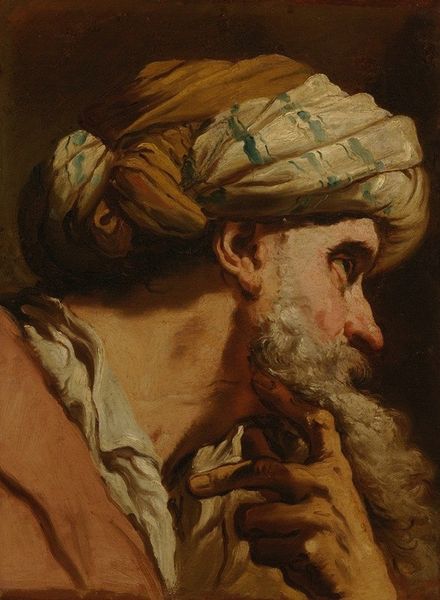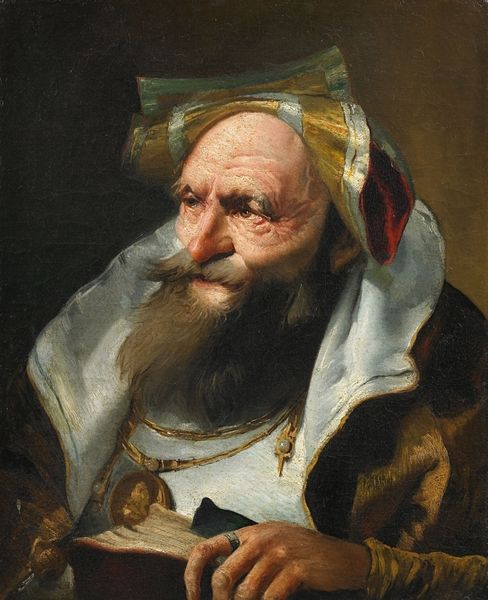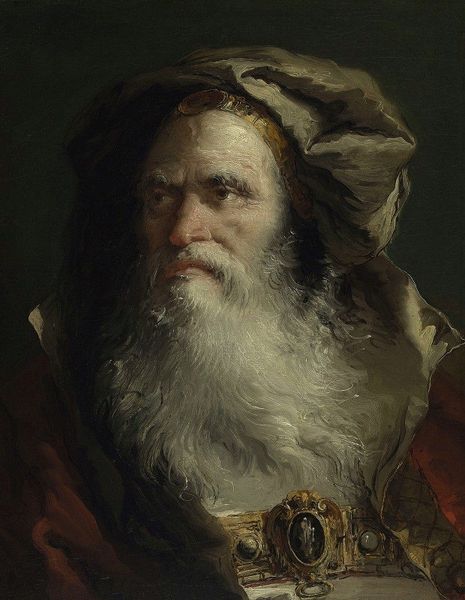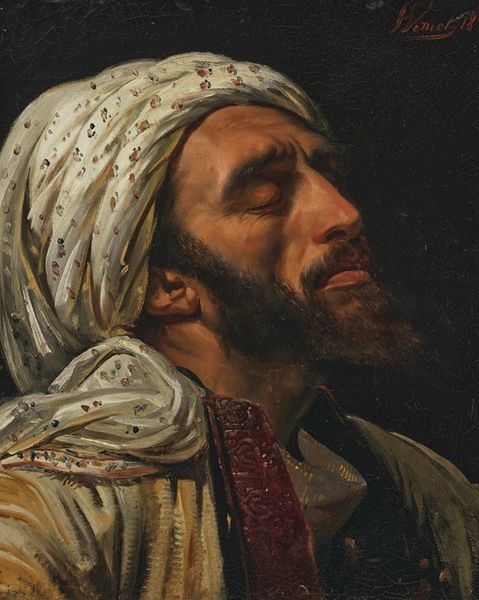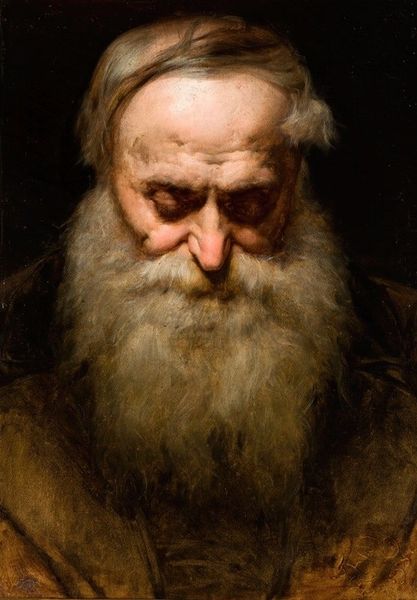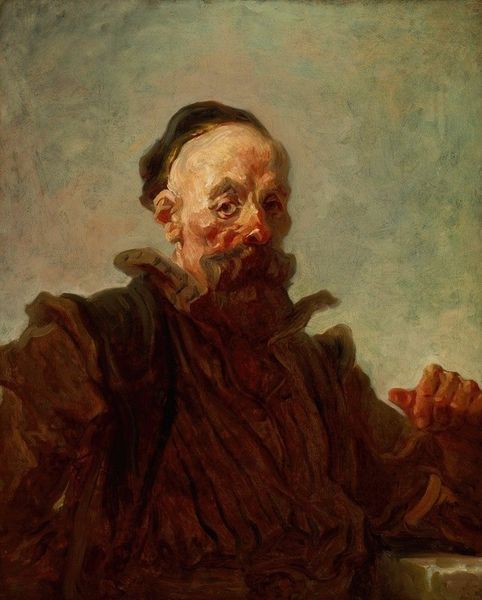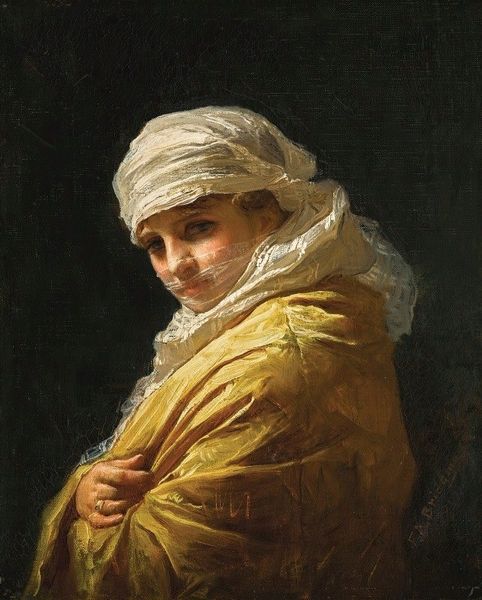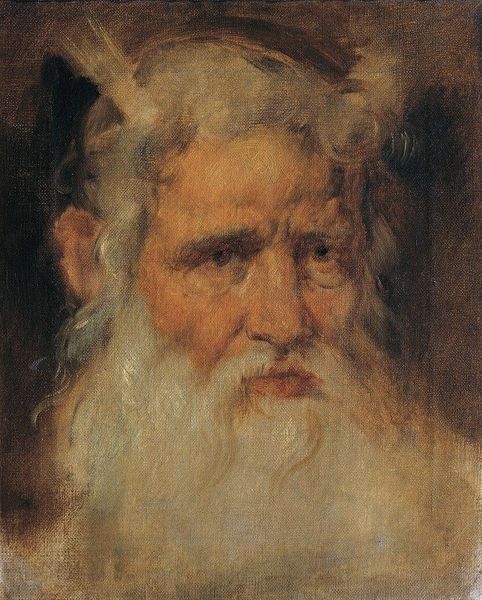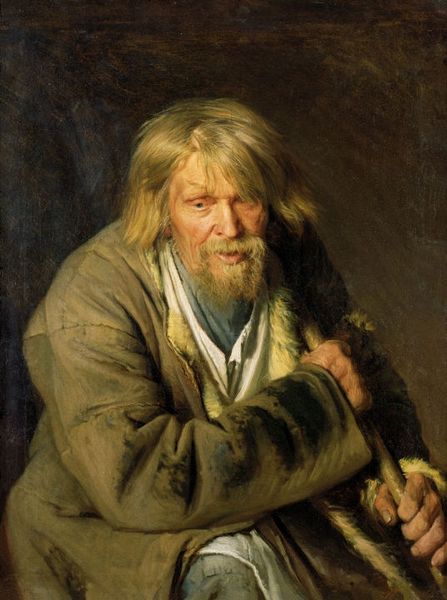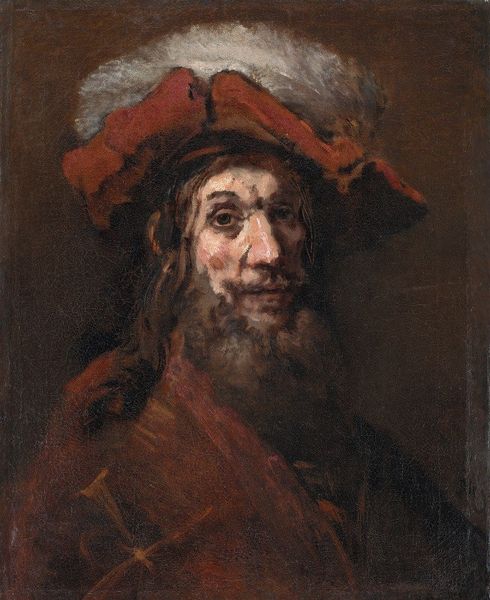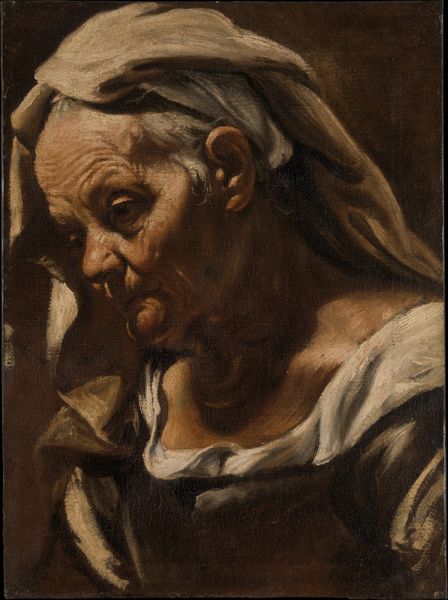
painting, oil-paint
#
portrait
#
baroque
#
painting
#
oil-paint
#
oil painting
#
history-painting
#
italian-renaissance
Copyright: Public Domain: Artvee
Editor: Here we have Giovanni Battista Tiepolo's "Head of a Philosopher," an oil painting from around 1740-1745. He seems quite burdened, almost world-weary. What do you see in this piece beyond just the surface? Curator: This work, ostensibly a study of an individual, can be more broadly interpreted within the context of the Enlightenment and its engagement with classical antiquity. Tiepolo presents us with a figure marked by time and perhaps struggle, a face etched with the consequences of knowledge and experience. We should consider how "philosopher" was conceived and how social structures dictated that specific figure. The figure is, essentially, marked and determined by age, maleness and white European aesthetics and cultural dominance. In this context, whose philosophy truly gets centered, and what worldviews were historically, violently and structurally obscured? Editor: That’s a perspective I hadn’t considered. It is a good way of highlighting how much the cultural idea of ‘philosopher’ dictates our understanding of him here. So, in essence, are you saying that Tiepolo isn't simply depicting a person but engaging with a whole complex system of ideas about wisdom, authority, and even exclusion? Curator: Exactly. Tiepolo, whether intentionally or not, presents us with a figure laden with cultural baggage. What is not represented here – whose knowledge, which bodies are deemed worthy – also shapes our understanding of what we see. Can we disentangle him from the patriarchal, colonial implications that shaped philosophy then and continue to echo today? How do we reckon with it now? Editor: This has really opened my eyes to the importance of considering these types of broader, more complicated cultural and historical contexts when viewing art. Curator: It’s about asking questions and challenging assumptions. Art offers an opportunity to critically engage with the past and present, which may reveal uncomfortable truths.
Comments
No comments
Be the first to comment and join the conversation on the ultimate creative platform.
